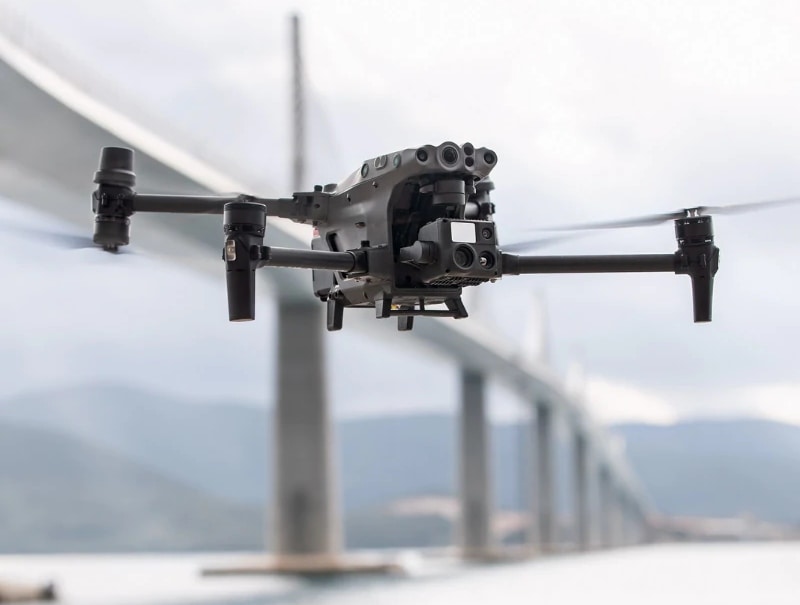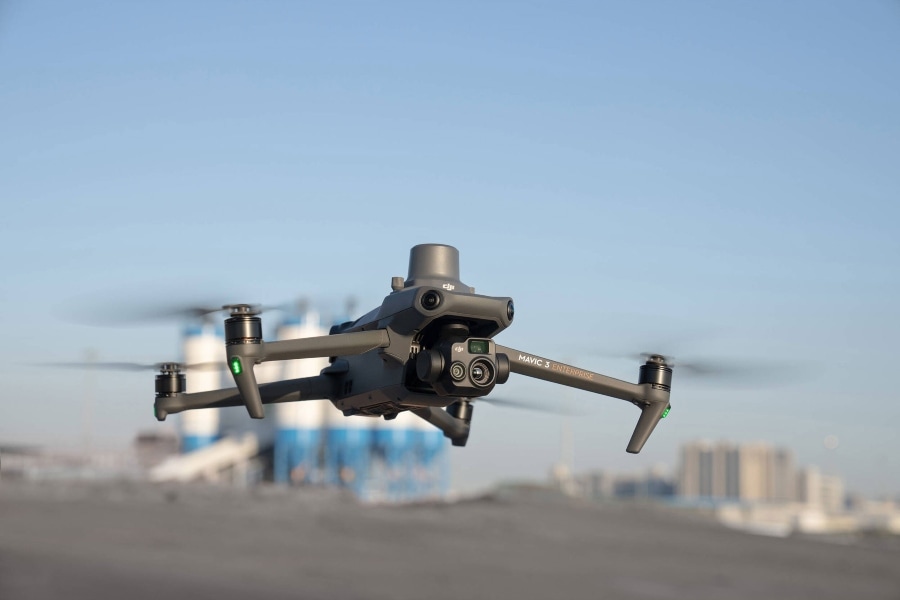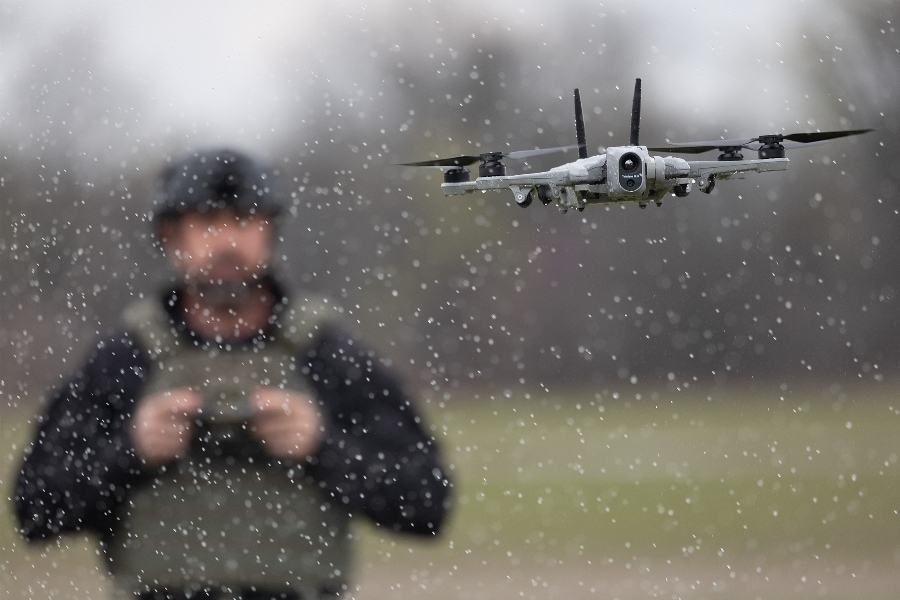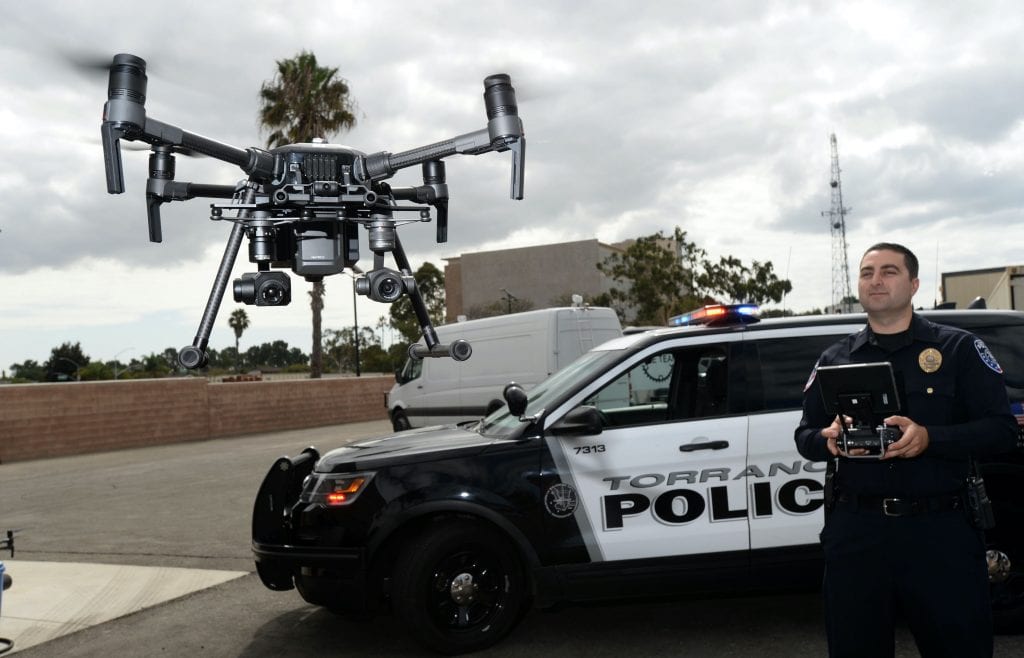New Law Bans Chinese Drones from the Federal Government
BY Zacc Dukowitz
10 January 2024A full ban on buying or using Chinese drones at the federal level has become law.
The ban comes from the inclusion of the American Security Drone Act (ASDA) in the National Defense Authorization Act (NDAA) for 2024, which President Biden signed into law on December 22, 2023.

The Matrice 30 | Credit: DJI
Here are the broad strokes:
- Starting December 2025, the government is prohibited from using federal funds to purchase drones made in China, Russia, Iran, and North Korea OR drones that use certain components* made in those countries.
- Also starting December 2025, the government is prohibited from operating drones made in those countries.
- The ban is in place through December 2028.
*These components are called “associated elements” in the law, and include elements related to the collection and transmission of sensitive information that enable the operator to operate the aircraft in the National Airspace System (NAS).
Why Are Chinese Drones Banned?
It’s easy to lose sight of this basic question amid the shuffle around the ban.
But it’s worth asking. Why exactly are we banning Chinese drones?
On its surface, the reason for the ban is security. As the argument goes, the Chinese government acts through private companies. And it could—and maybe actually is—using drones from DJI and others to secretly spy on Americans.
(Supporters of banning DJI have also cited human rights abuses and partial ownership by the Chinese government. There hasn’t been any evidence of human rights abuses that we know of, but the ownership claim does seem to hold water.)
Following the privacy argument, the presence of all these Chinese drones in our federal agencies means there are potentially thousands of spying devices embedded throughout our government, watching us and collecting sensitive data.

The Mavic 3T | Credit: DJI
While that scenario sounds sinister, there have been reviews of DJI technology that find it’s not actually happening.
Also, there just isn’t that much to spy on. Most DJI drones used by the federal government are put into action for things like fighting wildfires for the Department of the Interior, an activity that doesn’t have to do with sensitive infrastructure.
So, if security concerns are overblown, what’s the real reason for the ban?
Politics. That, and protectionism.
By politics we mean that politicians who don’t understand the realities of the drone industry are using calls for a ban to look tough on China and make a name for themselves.
And by protectionism we mean a push to make drone production completely domestic, ending our reliance on China for drones and drone components.
The issue of where our drones are manufactured has become a kind of political football, acting as a lightning rod for arguments about national security. But these arguments leave out any deep consideration of what a ban on Chinese drones actually means for the fire fighters, law enforcement officers, and other professionals who actually use them.
Good News for American Drone Companies
Of course, this new ban has big implications for American drone companies.
We think the total addressable market now for us after last week has gone up at least four times.
– Jeff Thompson, Founder and CEO of Red Cat
Even though the ban just passed and has two years before being implemented, American drone companies stand to benefit from it right now.

The Teal 2 | Credit: Teal Drones (owned by Red Cat)
In fact, American drone companies have been benefitting from the mounting pressure to ban DJI for the last several years.
The reality is that large, private companies are very conservative in how they vet the technology they use. And this is especially true for companies that work with the government.
If there is a whiff of potential scandal around something, large companies will generally avoid it. So while Chinese drones may not yet be fully banned, there has been a steady move away from DJI in some sectors simply because there is a perception that drones from China, and specifically from DJI, are associated with privacy concerns.
This is all good news for American drone companies. With Chinese drones closed off as an option, American clients have been turning to domestic drone companies to meet their needs, driving greater domestic adoption.
And there is one more piece of good news for American drone companies.
The Pentagon’s new “Replicator” program proposes to build—or buy—thousands of low cost drones made in the U.S. over just a year and a half. And these drones will almost certainly all come from American drone companies.
. . . But Probably Bad News for Americans
A blanket federal ban on Chinese drones means:
- Drone service providers who work with federal agencies will now be limited in the drones they can use to do their work on all federal lands, including places like national parks and wildlife sanctuaries.
- State agencies, like fire and police departments, will now be blocked from using federal funds to buy the drones they might want.
- Federal agencies will have to permanently ground their non-compliant drones, and find alternatives for replacing them.
But these are just the up-front impacts.
There are other, indirect impacts the ban may produce. High on the list is the likelihood that more states will adopt their own bans, just as Florida already has, making it so firefighters and police officers can’t use the drones they’ve bought with taxpayer money.

In Florida, the ban has been devastating for public safety agencies. It’s estimated that it will cost $200 million to replace the banned drones, and lawmakers didn’t initially budget any funds for these replacements. (They’ve since budgeted $25 million—about 13% of what’s needed.)
Another potential impact is that drones may become more expensive in the U.S., both for commercial and consumer models.
American drones generally come with a higher price tag than Chinese ones, and the lack of competition coupled with the smaller size of production—DJI can afford to sell more cheaply in part because its manufacturing costs are lower—means that costs will likely go up across the board.
But the truth is, we’re entering uncharted territory. As the ban deadline looms in two years, we’re sure to see new developments in domestic production.
The federal government may pump so much money into the American drone industry that we’ll see companies actually lower costs, or even see new companies stand up to meet the domestic demand.
The ban is coming whether we like it or not. Now it’s our job to make the best of it.


